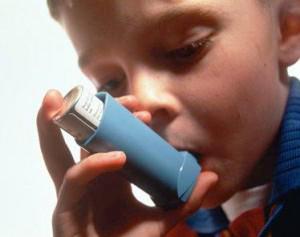 May is Asthma Awareness Month. Health and Human Services Secretary Kathleen Sebeliusa issued a statement asking us to consider what we can do better, as individuals and as a nation, in managing one of the most common lifelong chronic diseases.
May is Asthma Awareness Month. Health and Human Services Secretary Kathleen Sebeliusa issued a statement asking us to consider what we can do better, as individuals and as a nation, in managing one of the most common lifelong chronic diseases.
In her statement she reports:
- More than 25 million Americans have asthma, including 7 million children.
- Children with asthma missed more than 10 million days total of school in 2008.
- Medical expenses associated with asthma are estimated at $50 billion annually.
- It is critical to take the necessary steps to reduce asthma attacks.
- Successful asthma management includes: knowing the warning signs of an attack, avoiding things that may trigger an episode and following the advice of your health care provider.
The U.S. Department of Health and Human Services is working to raise awareness about asthma and to provide tools to help families and communities get the information they need:
- Having access to high-quality affordable health care is a must for asthma suffers.
- As a result of the Affordable Care Act, the 7 million children who have asthma cannot be denied health coverage now by insurance companies on the basis of a pre-existing condition. In 2014, that fundamental protection will be afforded to adults with asthma as well.
- We know that African-American children visit emergency departments for asthma care more often than Caucasian children, and that Latino children are less likely to see a doctor for routine office visits than non-Latino Caucasian children. While we’ve made progress in reducing disparities over the years, more needs to be done. That is why the health care law and Recovery Act investments are expanding the capacity of community health centers to care for the most vulnerable Americans regardless of their ability to pay.
- The Centers for Disease Control and Prevention is working with communities and schools to develop the tools they need to make their environments healthier for children with asthma. Three Louisiana school districts, for example, have adopted indoor and outdoor air policies, such as requiring school buses to turn off their engines while idling. Rhode Island families have gotten help in learning how to manage their children’s asthma from the new Home Asthma Response Program, which identified potential participants during asthma-related emergency room visits.
- The National Asthma Education and Prevention Program–coordinated by the National Institutes of Health–promotes improved asthma care and control through a focused outreach effort centered on written asthma action plans. These plans are a recommended but underutilized tool for managing asthma long-term and handling symptoms. These efforts include coordination with other federal agencies and key stakeholders and activities to promote resources and educational materials.
Secretary Sebeliusa concludes her statement by asking that we all learn what each of us and our communities can do to reduce the physical, social, and financial costs of asthma.
For more information, see http://www.cdc.gov/asthma/ and http://www.nhlbi.nih.gov/about/naepp.
 May is Asthma Awareness Month. Health and Human Services Secretary Kathleen Sebeliusa issued a statement asking us to consider what we can do better, as individuals and as a nation, in managing one of the most common lifelong chronic diseases.
May is Asthma Awareness Month. Health and Human Services Secretary Kathleen Sebeliusa issued a statement asking us to consider what we can do better, as individuals and as a nation, in managing one of the most common lifelong chronic diseases.
